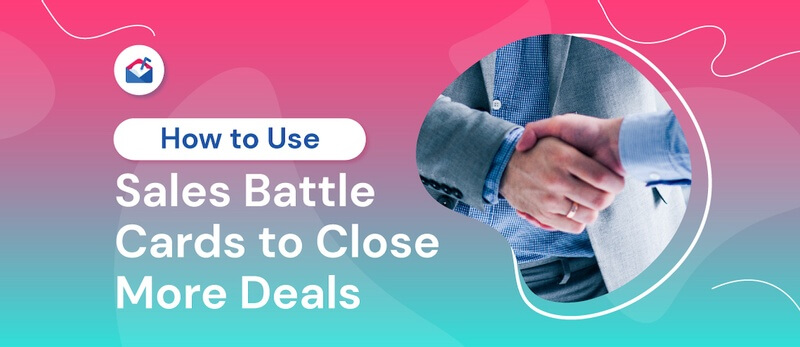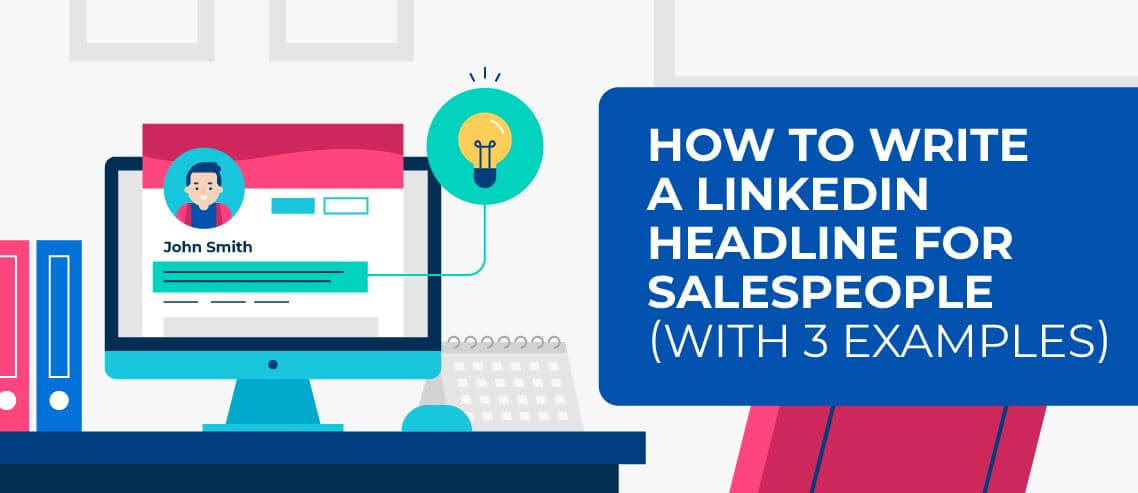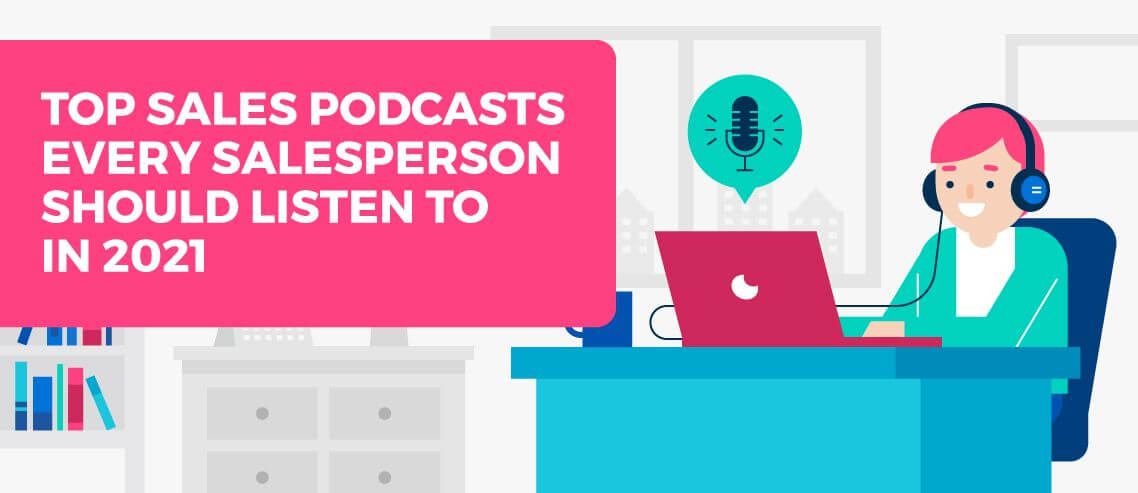How to Use Sales Battle Cards to Close More Deals

Contents
One in three salespeople say closing deals is the hardest part of the sales process, second only to prospecting.
But it doesn’t have to be that way. By using sales battle cards, you can clearly differentiate your product from those of your competitors, making it easier to close the deal.
In fact, 71% of businesses that use sales battle cards say their win rates have improved as a direct result.
What are battle cards in sales?
Sales battle cards might not be as ferocious as they sound, but they contain all the ammo you need to outsell your rivals. Battle cards provide a visual, side-by-side comparison between your product and that of one or more competitors, demonstrating how you measure up on things like:
- Product features
- Customer base
- Experience
- Pricing
Typically running to no longer than a page, they’re an effective way to highlight your key differentiators. Some are designed as customer-facing documents, while others are designed for internal use only. Either way, they take a lot of pressure off your sales reps by acting as a memory aid and closing tool.
Why do sales need battle cards?
Clearly, it’s always important for sales to understand – and have easy access to – the key points that help your product stand out against your competitors. But being more specific, there are two main benefits to using sales battle cards:
1. Understand your position in the competitive landscape
Buyers are better educated today than ever before.
Why? Because they have unprecedented access to information about your company, your product, and your rivals. Once upon a time, buyers had to attend meetings with multiple vendors to understand the types of solutions available to them, but today, they can simply find all that detail online.
So, it’s no surprise that 60% of buyers now prefer to connect with a salesperson during the consideration phase, once they’ve already done their research and compiled a shortlist of potential providers. In contrast, just 19% want to be contacted at the awareness stage, when they’re first learning about a product.
In short, this means your prospects already know at least the basics – and sometimes a whole lot more – about your product. They don’t want to hear a list of features from you. Instead, they want to hear about the specific strengths it offers against your rivals.
If your reps can’t effectively differentiate your product and provide clear evidence as to why a buyer should choose you over a competitor, don’t expect to close many deals.
2. Figure out how to differentiate yourself
It’s not enough to draw up a list of generic “differentiators” to use in all scenarios. You need to get specific by understanding and spelling out your strengths and weaknesses relative to each one of your biggest competitors.
If Company X is cheaper than you, it’s your job to explain why the additional functionality you offer is worth the extra price.
Or, if Company Y has a shorter lead time, you need to demonstrate how the additional steps you take are critical to project success.
Beyond simply listing those relative merits, your sales battle cards should provide punchy, ready-made pitches and one-liners for your reps to use on calls and in meetings. Keep these updated based on what works well (and what doesn’t).
Free Sales Battle Card Template
Need a battle card template to get started?
Try out this one-sheet template that contains everything you need to build out your own sales battle card, arming you with detailed insights as to how your company can provide a better solution or product for the client than the competition.
5 things to keep in mind when creating your battle cards
Sales battle cards are designed to be succinct. If you try to compare literally everything that differentiates your brand from the competition – the size of your office; the length of your name; your CEO’s inside leg measurement – your reps will struggle to pick out the most impactful points. Use the following pointers to inform your own battle cards:
1. Include win/loss insights
You might have a broader feature set than your biggest rival, while charging the same price. Yet you still frequently lose out to them in a head-to-head battle to close the deal. What’s going on?
Simply put, not all differentiators are equally important to buyers. It doesn’t help to have twice as many integrations as the competition if potential customers are only interested in one specific integration that your rivals offer, but you don’t.
That’s why it’s so important to base your sales battle cards on real-world win/loss insights. Understand what makes the biggest difference to your prospects based on the reasons you’ve won or lost deals in the past. If there’s one reason you consistently lose out, you either need to adjust your sales pitch or update your product.
2. Build battle cards specific to each team
Note how the title of this article refers to battle cards. Plural.
That’s because universal sales battle cards – that is, battle cards that are equally relevant to everyone within your sales function – are rarely effective.
For instance, a sales manager needs to take a top-level view of the market. As such, a sales battle card tailored to sales leaders might include information about long-term strategy and objectives.
However, that sort of detail likely won’t be of much use to front-line reps responsible for cold outreach. Instead, they simply want to understand the two or three biggest product differentiators between you and your main competitors.
3. Create soundbites, not manuals
Whether client-facing or for internal use, sales battle cards are designed to help your reps get that all-important “yes” from prospects and leads.
As such, your battle cards shouldn’t be an exhaustive list of facts and statistics. When they’re in the heat of a tense sales call, your reps don’t want to know that your G2 rating is 0.1 points higher than your rival’s. Instead, they want instant access to impactful phrasing that helps them persuasively communicate why your product is exactly the right fit for the person at the other end of the phone.
By building your battle cards around punchy soundbites, you’ll make them directly applicable to the conversations your reps are having on a daily basis.
4. Write kill lines to highlight where you beat the competition
In the course of your competitor research, you should identify a handful of differentiators – perhaps one or two for each competitor – that can be genuine deal-breakers when positioned correctly.
Those are your “kill lines”.
Write kill lines as go-to phrases designed to resonate with your buyers and communicate a specific benefit that only you can provide. Explain why this differentiator is so important and back it up through statistics.
Deployed effectively, kill lines will help your reps overcome objections and turn the tide of a challenging sales pitch in your favor. Use them wisely, though. Most kill lines are highly situational; there’s no point telling a prospect about all your fantastic integrations if they don’t use any of the products you integrate with.
5. Keep battle cards at hand for sales reps
Perhaps the most important point of all. Once you’ve gone to the trouble of creating effective battle cards, make sure they’re stored in an accessible location so your reps can turn to them when it matters most.
For instance, if you use a sales enablement platform, ensure your battle cards occupy a prominent location within it, or are at least easily searchable. Do the same with your CRM.
But don’t make it all about technology. Print them out, too. Mount a copy on the wall next to your sales team; pin it to the kitchen noticeboard; stick small, laminated versions to each rep’s desk. Whatever you do, make sure they’re always within easy reach.
Key information for your sales battle cards
While your sales battle cards should be tailored to your product and the competitor landscape you’re facing, there are several pieces of information that you’ll always want to include:
- An overview of your company: Your motto, core values, and mission statement.
- Market information: The size of your market, the medium and long-term outlook, and any key developments that might affect your sales conversations.
- Target audience: A few bullet points defining your main personas, their biggest pain points, and how your product solves them.
- Key features: A breakdown of the main functionality of your product, ideally ordered in terms of importance.
- Key benefits: Alongside your product features, explain why each is so important to your target audience.
- Competitor analysis: Identify your biggest competitor(s), give a brief company overview, and talk through their biggest selling points.
- Key differentiators: For each competitor, detail the key points that help you stand out against them, factoring in things like pricing, features, and customer service.
- Common objections: Your sales reps likely hear similar objections time and time again. List them here and set out effective responses to each.
- Case studies and statistics: A few helpful soundbites, such as testimonials from high-profile customers or eye-catching results you’ve achieved for similar companies, can be a big help in closing the deal.
- Helpful questions: Your reps shouldn’t just be answering questions; they need to ask their own, too. Write a list of questions that will help to build trust with prospects, qualify them as leads, and better understand their goals and pain points.
- Upsell and cross-sell opportunities: Highlight potential opportunities to pitch additional products or services that will make the buyer’s life easier or help them achieve their objectives.
Conclusion
There’s one more key point that isn’t fully covered by any of the sections within this article – don’t simply write up your sales battle cards then tick them off on your to-do list. The best sales battle cards are constantly rewritten to keep them relevant.
If a disruptor enters your market, add them to your battle cards. Likewise, if your reps enjoy particular success with a certain talking point or statistic, or if they identify a new objection that’s threatening to torpedo a lot of potential deals, your battle cards should be updated accordingly.
Don’t expect reps to use and rely on your battle cards if they’re full of outdated information.





